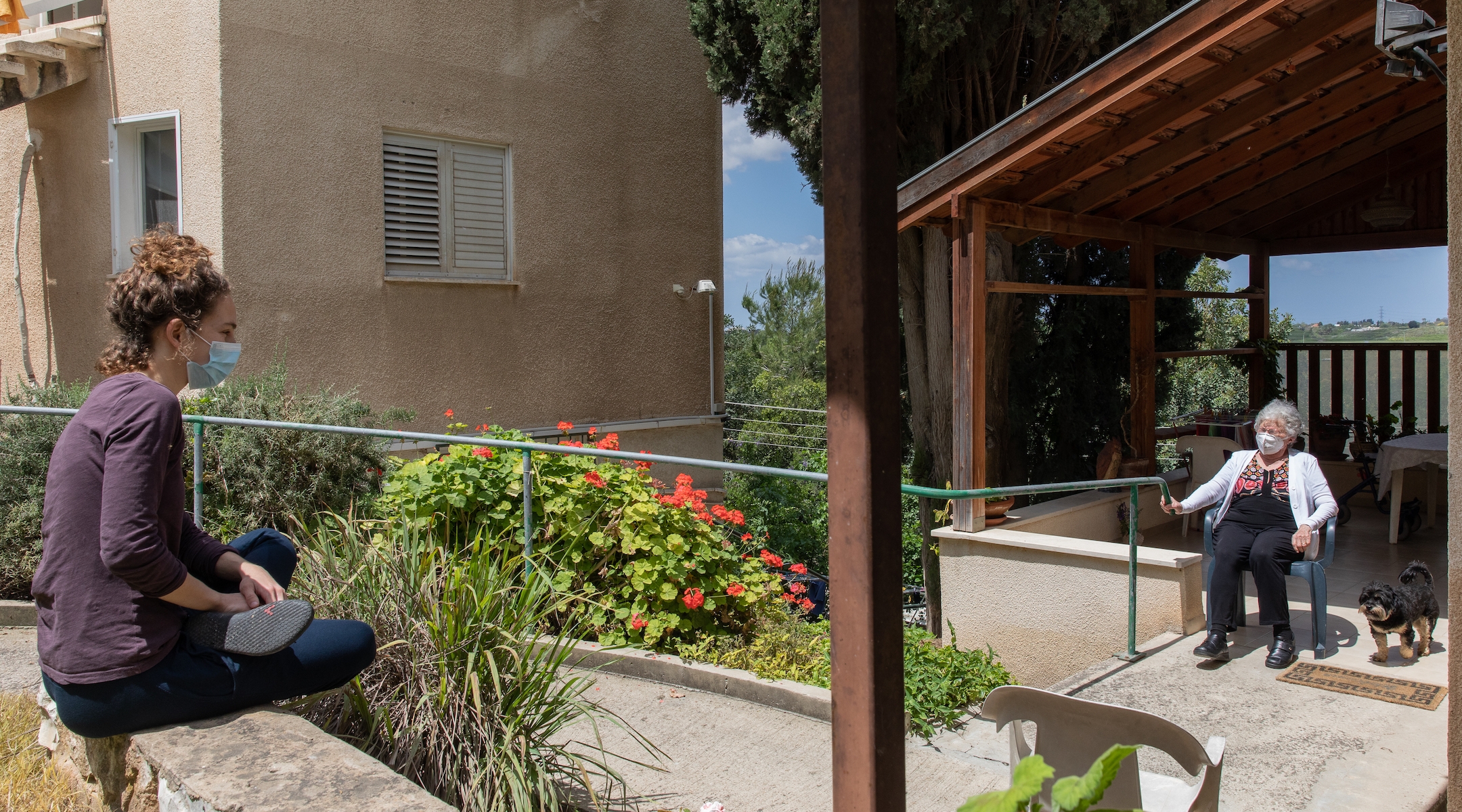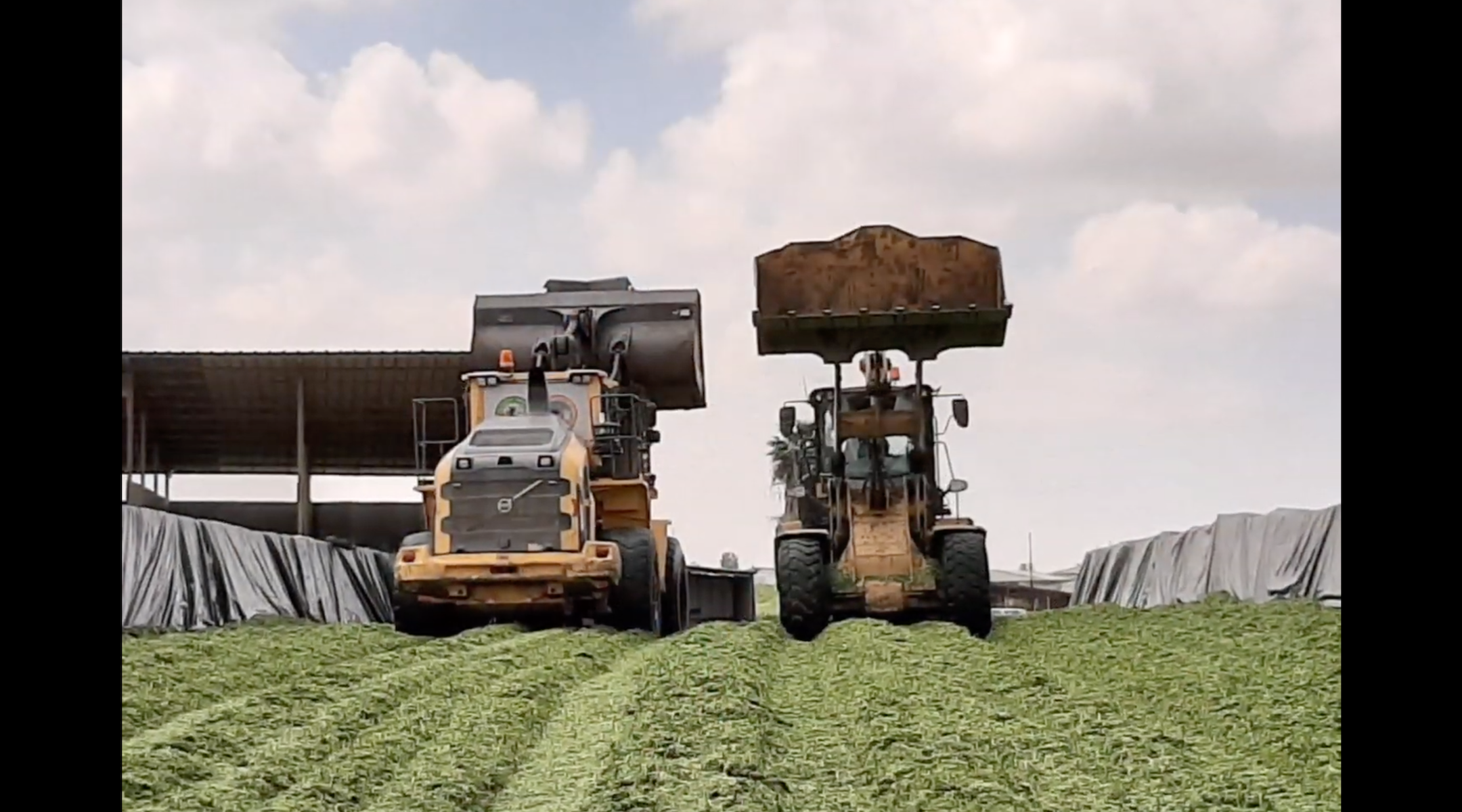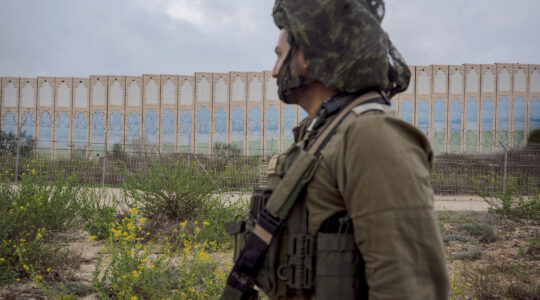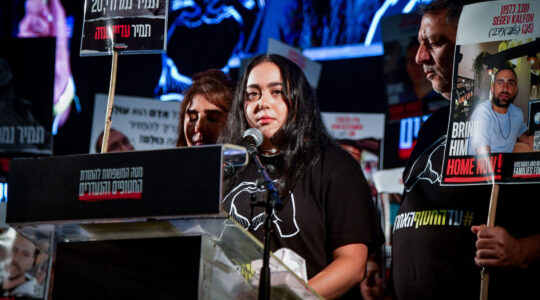(JTA) — Last year, as Israelis endured lockdown after lockdown and the country’s COVID rates bounced from record low to high, Tal Eshkol and Uriel Ross began to question the urban life they had begun as a young couple.
Like many of their peers, Eshkol and Ross were living in a small one-bedroom rental in Jaffa, the ancient city adjacent to Tel Aviv that has become trendy among young Israelis looking for relatively affordable rent in Israel’s coastal metropolis. But for years, Eshkol had wanted a change of scene, hoping to eventually move somewhere where she and Ross could enjoy a quieter pastoral lifestyle.
In the fall, after months of being restricted to their 540-square-foot apartment, the couple decided that they were done with city life. They applied to become members of Kibbutz Mevo Hama, a small communal farm two hours to the north, far from any city, with about 500 residents.
Now, even as Israel reopens, having vaccinated most of its population, Eshkol and Ross are still making the move. And they’re planning to buy a house that’s nearly three times the size of their apartment.
“I think this coronavirus time really challenged us regarding the type of life we want to have,” Eshkol, 33, said. “It showed us that you never know what’s going to happen. The whole world changed, and we decided to use this to create a positive change in our lives.”
COVID, and the societal upheaval it sparked, has prompted a wave of Israelis to look again at living on a kibbutz, a rural way of life that was once seen as a relic of Israel’s socialist past. Tens of thousands of Israelis have applied for membership in kibbutzim over the past year, according to Nir Meir, secretary general of the Kibbutz Movement, the umbrella group that includes most of Israel’s 279 kibbutzim.
“During the pandemic, our kids were always in the apartment and they were looking for things to do,” said Aviv Sabadra, a software engineer whose family is in the process of moving from Yavne, a central Israeli city, to a kibbutz. “We were thinking about finding a place to raise our kids close to nature where they can be more independent, and this made our decision.”
The first kibbutzim were founded more than a century ago, and in the years surrounding Israel’s establishment, the kibbutz movement was seen as a reflection of the spartan national ethos — producing physically fit Jews living in cooperative communities. Kibbutzim, according to Meir, were often placed on Israel’s borders, and young farmers doubled as soldiers.
Kibbutz members also committed to a strict socialist ideology, eating meals in mass dining halls and raising children in collective homes where they lived apart from their parents. But by the 1980s, many kibbutzim had accumulated substantial debt, and young people wanted to make their own way in a country that was departing from its socialist roots and privatizing its economy.
Eshkol’s parents were among those who left a kibbutz. Her father was raised on a kibbutz, and the couple lived on one as newlyweds, but her mother disliked the lifestyle.
“My dad was excited about kibbutz values and community,” she said, “while my mom said it was too much of everyone being in everyone else’s business.”

A young woman visits her grandmother at Kibbutz Barkai, Israel, April 26, 2020. (Guy Prives/Getty Images)
Facing a declining population and poor economic prospects, many kibbutzim privatized their factories and farms. They also built new housing developments on their grounds that were rented out to yuppie families who at times did not become members, allowing them to enjoy the kibbutz lifestyle with none of the perceived drawbacks of socialism.
Those housing developments have driven a revival of kibbutz life over the past couple of decades, especially as home prices in Israel have skyrocketed. That revival has accelerated during the pandemic. In 2000, some 117,000 people lived on kibbutzim, according to Israeli government figures. This year, Meir said, they have a total population of 182,000 — larger than ever. He calls it “a huge renewal of the kibbutzim.”
“The paths used to be full of motorized carts for older people, [and] now they are full of baby carriages,” said Yossi Levy, the absorption coordinator of Ein Hashlosha, a kibbutz one mile away from Gaza that has grown from its 110 members with an influx of 15 young families over the past two years. Six more are slated to move in over the next couple weeks. Before the new arrivals, the average age of kibbutz residents was 65.
Obtaining kibbutz membership, according to Meir, generally includes an interview process along with a year living as a candidate on the kibbutz before a vote is taken for membership. Kibbutzim can also review financial records. At Ein Hashlosha, for example, candidates must receive positive votes from two-thirds of the members to gain acceptance.
Two of the newer members are Dor and Liora Ben Tzur, who moved to Ein Hashlosha in 2019 after graduating from college and live there with their 19-month-old toddler, Avishai. They are enthusiastic about the kibbutz despite occasional rocket attacks from Gaza that send them running into a bomb shelter in their house. From the time an outdoor siren sounds, they have just 15 seconds to get to the shelter.
“We have friends in the city,” Liora said several weeks ago, standing in the house the couple is renovating as their son ran back and forth, grabbing cookies from a plate. “They live in a building, and they don’t have anywhere to go with the children. All the parks are closed, you can’t go outside, and here on the kibbutz the children are running around, playing in the mud with the cows. It’s just lovely.”
The decision also made economic sense. The Ben Tzurs paid less than $100,000 for their house, a fraction of the home prices in Tel Aviv, where the average apartment costs more than $800,000, according to the Israeli real estate website Madlan.
Aviv Sabadra and his family are also moving close to Gaza and Egypt, to Kibbutz Gvulot, whose name means “borders.” They decided to make the move in October and are going through the process of becoming members.
Eshkol and Ross are also in the midst of the acceptance process and are figuring out how to move their jobs from Jaffa to northern Israel. Eshkol is a hospice nurse and Ross is a social worker.
But even though the move means changing their lives, and the COVID lockdowns that spurred the decision have ended, Eshkol said she isn’t looking back.
“While the coronavirus was the catalyst to move to a kibbutz, it was something we’ve wanted to do for a long time,” Eshkol said. “And I have certainly not changed my mind.”
JTA has documented Jewish history in real-time for over a century. Keep our journalism strong by joining us in supporting independent, award-winning reporting.






